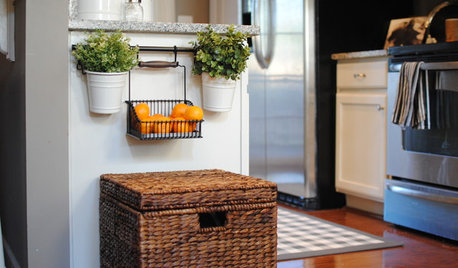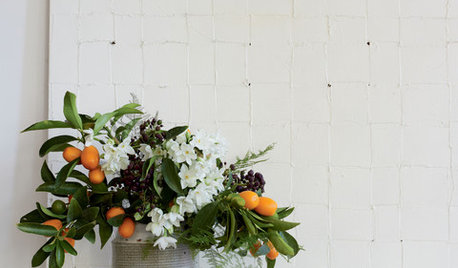propagate fruit trees from cuttings?? not grafts
kroach001
12 years ago
Related Stories

FARM YOUR YARDIf You Have Room for Only One Fruit Tree ...
Juice up a small garden with one of these easier-care or worth-the-effort fruit trees for a mild climate
Full Story
EDIBLE GARDENSHow to Grow 10 Favorite Fruit Trees at Home
Plant a mini orchard in fall, winter or early spring to enjoy fresh-off-the-tree fruit the following year
Full Story
GARDENING AND LANDSCAPINGCrazy for Fruit Trees
Whether a single citrus or a mini apple orchard, even the smallest landscape space can bear deliriously delicious fruit
Full Story
EDIBLE GARDENSGrow Plum Hybrids for Your Favorite Fruit Flavors
Plums are cozying up with apricots, peaches and even cherries — here’s how to grow these hybrids for the best aspects of each
Full Story
GARDENING GUIDESGreat Design Plant: Grow Blueberries for Their Fruit and More
Eastern gardeners should consider growing blueberry plants for their delicious fruits, bee-friendly spring blooms and brilliant fall foliage
Full Story
EDIBLE GARDENSHow to Add an Apple Tree to Your Edible Garden
Readily available, beautiful and fragrant, apple trees offer four-season interest along with crisp, juicy fruit
Full Story
FALL GARDENING5 Fall Fruits You Can Grow in Containers
Brighten your porch or patio with a potted pomegranate, kumquat, blueberry bush or another great fall fruit
Full Story
MOST POPULARHow to Get Rid of Those Pesky Summer Fruit Flies
Learn what fruit flies are, how to prevent them and how to get rid of them in your home
Full Story
Fruit Displays Sweeten Summer Interiors
Eating the rainbow takes on a new meaning in these seasonally inspired fresh fruit accents
Full Story
DECORATING GUIDESPut Your Best Fruit Forward in Splendid Fall Arrangements
Luscious, colorful and unbeatably fresh, fruit-centered arrangements bring welcome flavor to fall home decor
Full Story





gonebananas_gw
alan haigh
Related Professionals
Baltimore Landscape Architects & Landscape Designers · Hyattsville Landscape Architects & Landscape Designers · Saint Louis Park Landscape Architects & Landscape Designers · Taylorsville Landscape Architects & Landscape Designers · Forest City Landscape Architects & Landscape Designers · Stamford Landscape Contractors · Azalea Park Landscape Contractors · Brockton Landscape Contractors · Cerritos Landscape Contractors · La Vista Landscape Contractors · Oxnard Landscape Contractors · Pleasant Prairie Landscape Contractors · Ponte Vedra Beach Landscape Contractors · Washington Landscape Contractors · Reisterstown Landscape Contractorsmarknmt
Kevin Reilly
kroach001Original Author
ken_adrian Adrian MI cold Z5
Scott F Smith
alan haigh
marknmt
franktank232
lkz5ia
alan haigh
marknmt
luke_oh
iammarcus
alan haigh
Scott F Smith
gonebananas_gw
Macmex
Konrad___far_north
Mad Ferret
iammarcus
applenut_gw
kansasapple
iammarcus